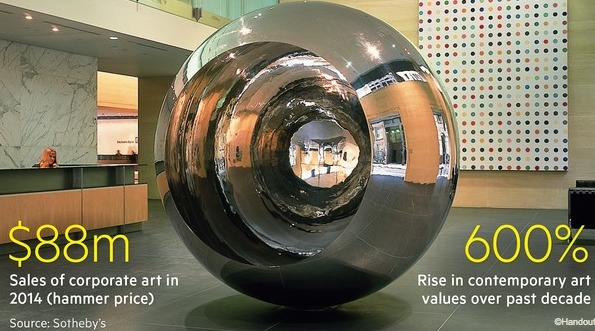
Global companies with an eye on the bigger picture invest in contemporary creations. Just beyond the turnstiles of Deutsche Bank’s London reception sits a large object resembling several huge dollops of creamy Plasticine. As the viewer comes close, it turns out to be a sculpture made entirely of dice.
“Secretions” (1998) by British artist Tony Cragg, a trained scientist, addresses questions about the structure of the universe. But some might find the frisson of gambling it evokes entirely appropriate for the lobby of a global investment bank. The piece, which sits alongside a polished metal sphere by Anish Kapoor and one of Damien Hirst’s “spot” paintings, is part of a collection of about 60,000 works owned by Deutsche Bank.
Companies promote the social responsibility of their art activities but corporate collecting also remains what it has always been: good for business. As Kai Kuklinski, chief executive of insurer Axa Art Group, wrote in his foreword to Global Corporate Collections: “Broadly speaking, the nature of the patronage afforded to art by both private and mercantile wealth hasn’t fundamentally changed since the height of the Medici age.”
